A few years back I bought a car wash/laundromat. The business was run by a manager and 3 part-time employees.
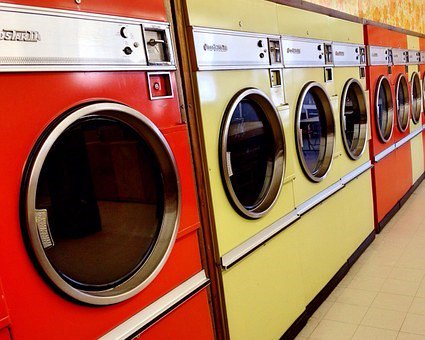
While there were many problems to be addressed, the “front of house” was immaculate. I loved how spotless the store was. Each time I visited the laundromat was CLEAN. It literally sparkled – and I learned “it’s so clean” was a common customer comment.
Even with the backroom problems, it was clear that there were people that cared about this business – and Lois was one of them.
Lois
Lois was a hard-working, retired nurse who was a mostly pleasant employee. I say “mostly pleasant” because she did have occasional bouts of curmudgeon. I’d watch her reaction when I said “good morning” – and knew, from her facial expression, how the shift was going to go.
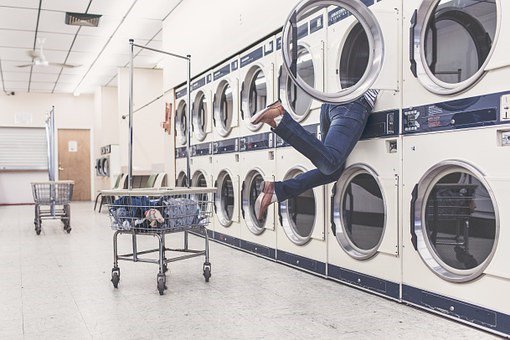
Lois was the clean freak of the laundromat. Committed to keeping the place spotless, she would go through each machine, every shift, with a small toolkit of brushes to clean out the smallest piece of debris.
Given her small size, it was not unusual to find Lois almost entirely inside a machine, cleaning, scraping and scrubbing. She cared. All the time. And was a great employee, 98% of the time. I’ll take those percentages. I liked Lois, and appreciated the work she did for us.

Press 2 for Heavy Loads
But Lois was not really on my radar for the first several months of ownership. The team of employees we had was stable, but this business was in serious financial turmoil. While the reduced price I’d paid for the business would make my load lighter than the previous owners, there was a lot of change required to achieve my goal for the business.
I intended to sell the business five years after I bought it. It was purchased as a turn-around venture. If I could correct some key elements, I could make it much more valuable in a short period of time. It was an experiment of sorts. I wanted to prove out the steps I had taken to create value when I sold my first business. This was a real-world opportunity to do that, but I couldn’t afford for it to take very long. The business was eating money, and I didn’t have that much for it to eat.
To make a future sale possible, the first thing I needed to do was increase the seller’s discretionary earnings generated by the business. We needed to make more money and keep more of the money we made. I needed to figure out how.
Rinse Cycle
After assessing the operation for a few months, in addition to raising the prices and increasing marketing, I came up with one critical operational change:
- I had to lower our standard for cleanliness. That’s right, we needed to change one of the things that attracted me to the business in the first place.
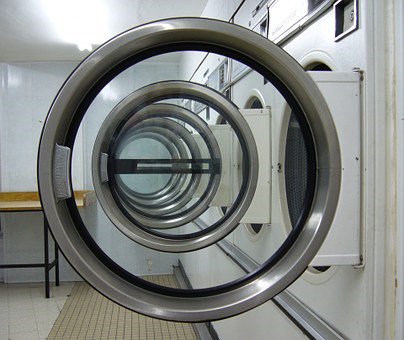
Use Hot Water Cycle to Get it CLEAN
Customers had raved for years about how CLEAN the store was, and staff took personal pride in that. But the reason for the hyper-cleanliness pointed to the cause of our financial instability. You can only be CLEAN if you aren’t busy.
I sat and watched in the first few months of ownership as our immaculate store was “trashed” (Lois’ word) by customers using the facility exactly as intended. When the construction crew rolls into the laundromat with 7 garbage bags full of soiled work clothes, I was thrilled to see them come. But the store cleanliness was worse for wear after they left. This sort of facility gets dirty if it’s being used – and if we were going to increase earnings it needed to be used a lot more.
The problem was that we were cleaning the store to achieve a pinnacle of CLEAN, and that wasn’t effectively serving customers, the bottom line, or my goal to sell the business.
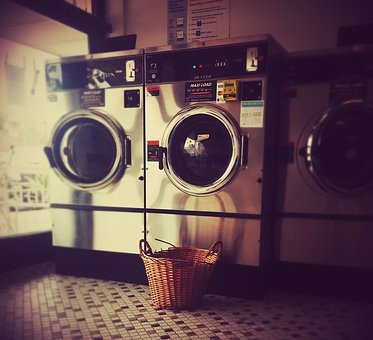
Not Dirty
When I was finally ready, we pulled the staff together for a meeting, I explained our new goal: “not dirty”.
CLEAN was no longer the goal. Our new goal was to have the store spend as much time possible being “not dirty”.
That might seem like a silly distinction, but it was significant for our operation and our bottom line.
We wanted an average customer to walk into the laundromat and not be “turned off”. However, I didn’t believe that the average customer needed to be “turned on” by how spotless the store was. As we were usually unstaffed, CLEAN was out of reach. At best it was accomplished for a moment, until staff walked out the door and customers started using the place.
More importantly I reminded them, this business was failing financially. It might be great to have a CLEAN laundromat, but in our market the revenue didn’t justify the expense we were incurring to reach that standard. The business had to change.
The goal was no longer CLEAN, it was “not-dirty”, and we started working toward that new goal.
Guess what?
Lois Hated It
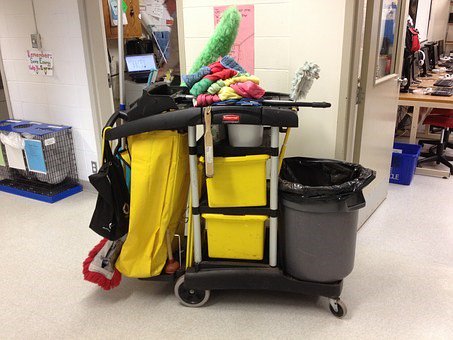
With the new standard and schedule, instead of spending time on detailed, meticulous, perfecting of the sparkle, Lois was forced to do things like mop the floor, clean up bigger spills, and maintain a basic level of cleanliness. To her credit, she did the new work with her usual energy and effort. She really tried.
The problem was she would reach the end of her shift and be unhappy. While the place would be much cleaner than when she’d started (and cleaner than our competition), it was well below her expectations. She was now producing the same “pretty clean” result that she had complained about other employees achieving.
Lois was frustrated, and thought the place looked “horrible”. She thought our customers would run away, even though we continued to be the “cleanest in town.” It was clear Lois couldn’t handle the lower standards.

She Goes
To tell the truth I didn’t actually fire Lois, but I didn’t try to hire her back when she quit for the fifth time.
I mentioned Lois had a “curmudgeon” streak. Turns out she would “quit” once every three months or so. She’d get frustrated with something minor going on at the store (low cleaning supply inventory, skipped task by an employee on another shift, etc.). I’d stop by the store to find a set of keys along with a note from Lois saying “I quit.” It was hard to find good staff given what we could afford to pay, so when this had occurred in the past, I’d reach out to her, we’d sit down, she’d vent her frustrations, ask for her job back, and I’d say yes.
Instead, this time I handed her the last paycheck and simply said “thanks so much for all the great work you’ve done for us.” I let it go at that.
To be fair, I’ve shortened this part of the story. Lois and I had several conversations between the “change” occurring and when she finally quit. She made an honest struggle with the new standard, and I made an honest struggle to help her, but it was clear that it wasn’t going to work. She felt CLEAN should outweigh any goal I had as the business owner. I felt differently.
I was sad to see her go. Lois was a great employee, and in a different environment, I would hire her back in a second. But the business results needed to change and what Lois cared about wouldn’t let that happen.
Please Don’t Overload the Machines
Lois cared about something that wasn’t critical to creating transferable value in the business.
I wanted to sell the business in 5 years (it only took 3 1/2 for the sale to happen!). That goal (and my available capital) meant the bottom line needed to change quickly so we could build a track record of profitability for a potential buyer. The “not dirty” change allowed us to pull an entire staff shift from every day, while increasing the average cleanliness of the store. It lowered expenses and raised the average customer’s quality experience.
Selling the business wasn’t going to happen because of how clean we kept it. Even if a potential buyer appreciated the extreme cleanliness (as I had), it would be way down on the list of what they valued.

Deposit Correct Change Only
If you want to sell your small business, you must create transferable value. To do that, you focus on the small number of elements that are critical to the sale of a business. You can’t afford to have employees like Lois, or to be like Lois yourself. And make no mistake, owners mess this up way more often than employees do.
Too many small business owners fool themselves into believing that “other things” matter when it comes to the sale of their business.

I can’t tell you how many businesses I’ve looked at as a potential buyer where the owner is like Lois – ferociously concerned about something that is important to business operations, but not critical to creating value in the business for me as a potential buyer.
“Our store is the cleanest in town” (clean is easy without customers).
“We’ve sold our product in 34 different countries” (1 or 2 sales in each country. No traction anywhere, but they enjoy coloring in countries on the map in the office.)
“Our customers LOVE our high level of service” (But we lose money on every customer because we over-serve them relative to our price.)
These are real measures and accomplishments. Things to genuinely be proud of. Cleanliness, international sales, customer satisfaction are all important. But they will not substitute for the critical elements that create real transferable value in a business. Unfortunately, most small business owners don’t learn this until they try (and fail) to sell their business.
It’s not a crime to care too much like Lois did. It’s not even a crime to care too much about the wrong thing as the owner. But if you want to sell your business someday, caring about the wrong thing will kill your potential sale, and set-up a personal financial disaster.
Don’t confuse how much you care with creating real value in your business.
Don’t make the mistake of believing that you get to decide what creates value in your small business.
“No, we’re not profitable, but our customer service rating is higher than our competitors and that’s why our business is so valuable!”
Keep it simple. If you’re serious about building a business you can sell, don’t allow yourself, or an employee, to care “too much” about things that don’t create transferable value in the business.
Where does CLEAN need to become “not dirty” in your business?